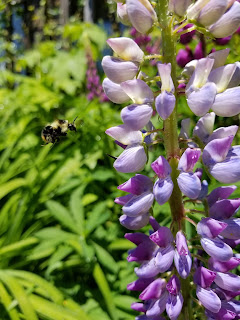Plant a Pollinator Garden
You can plant a pollinator garden anywhere – your yard, in pots on your patio, school, work, community gardens or churches. A garden filled with native plants will attract butterflies, bees and other pollinators and provide them with nectar while they in turn pollinate our fruits, vegetables, trees and flowers.
Research
What varieties of wildflowers and milkweed are native to
your region? Don’t know! That is okay because the Xerces Society has compiled a
list of
regional native plants. It is best to purchase seeds from a local source
because this will ensure the seeds you get are acclimated to your climate and resistant
to disease in your area. If you are unsure of where to buy local seeds, the
Lady Bird Johnson Wildflower Center at the University of Texas in Austin has a directory of national seed
supplies.
Supplies
- Garden bed, raised bed, or flower pots
- Garden tools (hoe, shovel, hand shovel)
- Nutrient-rich soil Mulch
- Native plants / seeds
Choosing your plants / seeds
- Select native plants and seeds
- Select plants that have not be treated with insecticides, neonicotinoids, or pesticides
- Select perennial varieties – this will ensure they come back year after year without replanting
- Diversity is the key – select varieties that bloom during different seasons to ensure there is food available from spring through fall
Instructions
- Select the location – a sunny spot with some wind protection (butterflies like sunbathing)
- Check your soil – if using native soil you will want to check the pH and nutrient level. Soil test kits like the one pictured are easy to find in the garden center of your favorite department store. This step is not as important if you are planting in a raised bed or container and using commercial soil.
- Plant your seeds and / or plant
- For Plants:
- Dig a hole slightly larger than the plant’s root ball
- Insert plant into hole
- Cover roots with soil
- Cover with mulch (prevents weed growth and conserves water)
- Water thoroughly to ensure soil / root connection
- For Seeds:
- Rake area to loosen soil
- Cast seeds
- Cover loosely with soil
- Water thoroughly
- Patience – now it is time to wait and watch your plants grow and seeds sprout
- Maintain:
- Water regularly
- Weed regularly
- Feed as needed
Now you can sit back and enjoy the sights and sounds of
pollinators visiting your garden.
With the establishment of your new pollinator garden, you
can help observe and report sighting of migratory Monarch Butterfly.






Comments
Post a Comment